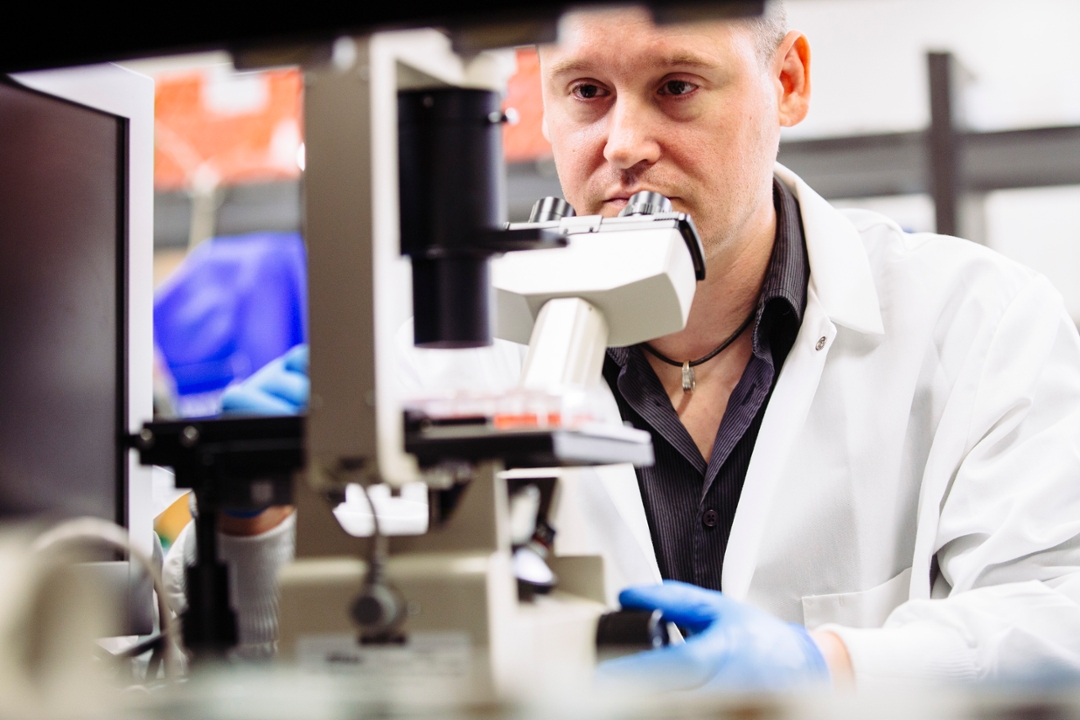
Bridging medicine and agriculture to prevent age-related illness
If Dr. Christopher Eskiw (PhD) and his co-investigators are correct, the inner workings of brewing yeast could point the way to greater human longevity and the prevention of age-related illness, perhaps even the reversal of aging.
By KATHY FITZPATRICKIt may also lead to better treatment of a rare disease that causes rapid aging and pre-mature death of children. “Absolutely heartbreaking” is how Eskiw describes the ravages of Hutchinson-Gilford progeria syndrome (HGPS).
An assistant professor with the Department of Food and Bioproduct Sciences in the University of Saskatchewan’s (Usask) College of Agriculture and Bioresources, Eskiw is the co-recipient of a Canadian Institutes of Health Research (CIHR) award given this summer. The first CIHR award to the college, it is shared with Drs. Troy Harkness (PhD) and Terra Arnason of the USask College of Medicine.
The project is notable for the way it combines Eskiw’s expertise in nutrigenomics (the study of how diet interacts with genetic material) with Harkness and Arnason’s expertise in the connection between cellular aging and metabolism. Their proposal was ranked second among 54 grant applications, and was one of only three awarded in Saskatchewan.
The project grant of $872,000 over the next five years will enable them to determine the role in the aging process of an essential piece of cellular machinery called the Anaphase Promoting Complex (APC).
Aging is the prime focus of Eskiw’s work, and it’s also inextricably linked to his research passion, the functioning of human genetic material. Accustomed to using mice and human cells in the lab, he first thought of working with yeast after chatting with Harkness and Arnason, who use it in their research.
Eskiw came to Harkness with a question regarding a genetic mutation that causes HGPS. It leads to the accumulation of a single toxic protein (called progerin) that accelerates the aging process. “My crazy idea was to take that human gene and protein and put it in yeast to see what would happen,” Eskiw explains. Because yeast ages rapidly, it’s well suited for the study of premature aging.
“The more we talked about it, the more we found overlap in our research. It’s merging,” Eskiw says.
The APC rids cells of ‘junk’ such as old damaged proteins that interfere with proper cell functioning, he explains. He compares it to regular oil changes in a car engine. Previous research from the Harkness and Arnason labs has shown that in both yeast and human cells the APC activity falls off during aging. However, Harkness has identified a series of molecules that reactivates the APC.
Learn more in the latest issue of Discovery Digest.
